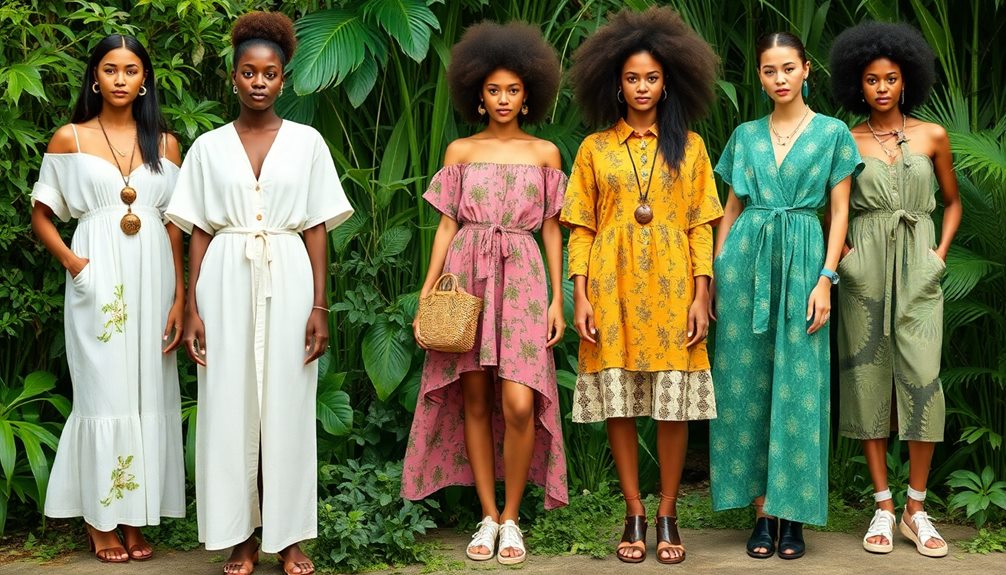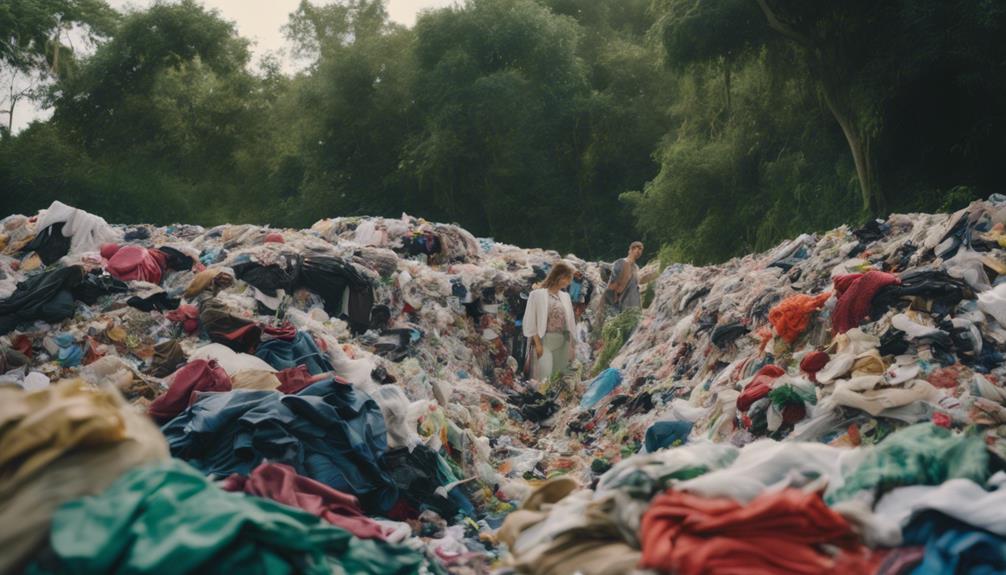Sustainable fashion may appear to be an ideal option, but it comes with some surprising drawbacks. Many brands make claims that are not backed up, which can leave you unsure about what is actually environmentally friendly. Costs can also be significantly higher, with sustainable options generally priced 2 to 5 times more than fast fashion. Additionally, ethical labor practices are not always guaranteed, as some companies still rely on unfair working conditions. Innovations often do not have a significant impact on reducing environmental effects, and misunderstandings about eco-friendly materials persist. It is important to be aware of these hidden pitfalls in order to make well-informed decisions. Interested in learning more about what else you may discover? There is a lot more to consider in this complex discussion.
Key Takeaways
- Many sustainable fashion claims are misleading, with around 60% of brands making unsubstantiated environmental claims that contribute to greenwashing.
- The industry heavily relies on non-biodegradable materials, undermining the effectiveness of eco-friendly initiatives and innovations.
- Sustainable clothing often comes at a high cost, making it financially inaccessible for a large portion of consumers.
- Current market-based solutions, like rental and resale, have not significantly altered consumer behavior or reduced waste in the fashion industry.
Industry Claims Vs. Reality
Despite the fashion industry's claims of sustainability, you might be surprised to learn that its environmental impact has barely changed over the last 25 years.
While many brands tout their sustainable fashion initiatives, the reality is that the reliance on non-biodegradable, petroleum-based materials remains high. You might think that high-profile innovations, like bio-based materials and recycling initiatives, would lead to significant improvements, but they've largely failed to reduce the industry's overall environmental footprint.
The misconception that sustainability exists on a spectrum can be misleading. You may believe that adopting ‘less unsustainable' practices equates to true sustainability, but that's not the case.
Market-based solutions, such as rental and resale models, haven't addressed the root causes of environmental degradation within the fashion industry either. Instead of focusing on these superficial changes, it's essential to recognize that the true challenge lies in holding companies accountable for their environmental impact.
Regulatory intervention is becoming vital, as current voluntary measures and self-regulation haven't led to meaningful accountability. Understanding these discrepancies between industry claims and reality can help you make more informed choices about sustainable fashion.
Failed Innovations and Strategies
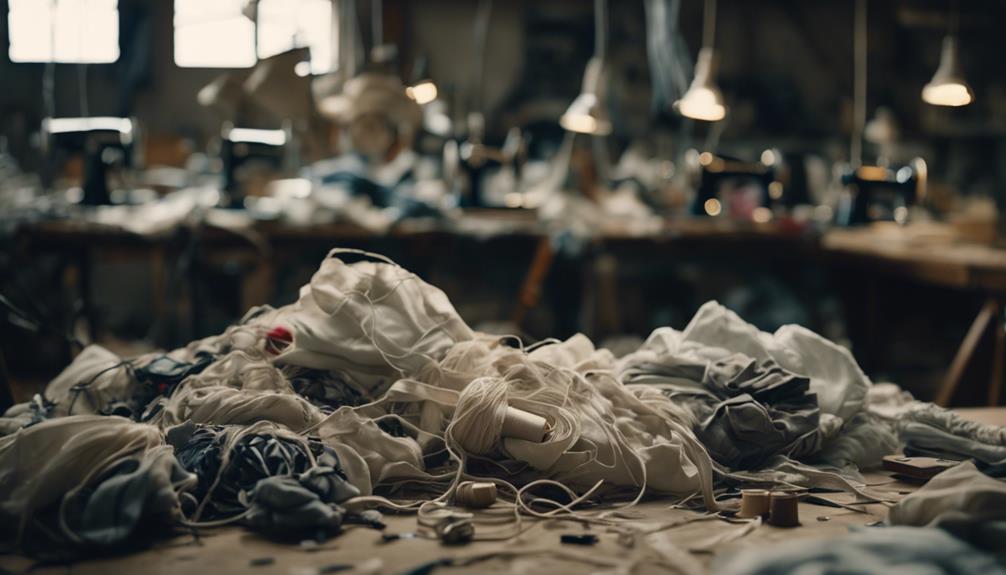
You might think that sustainable fashion innovations are making a real difference, but many claims just don't hold up.
Misguided business models often focus on surface-level changes instead of addressing deeper issues, leaving the industry's environmental impact largely unchanged.
It's essential to recognize these failures to understand the true challenges facing sustainable practices in fashion.
Ineffective Sustainability Claims
Many consumers are misled by sustainability claims in fashion, as high-profile innovations often fail to deliver real environmental benefits. While brands tout bio-based materials and recycling initiatives, the truth is these efforts have fallen short of reducing the environmental impact over the last 25 years. You might think that choosing 'less unsustainable' options equates to actual sustainability, but this misconception leads to ineffective sustainability claims that do little to address the core issues.
Additionally, concepts like Rent-the-Runway showcase how market-based solutions struggle to mitigate the fast fashion industry's footprint. Despite being marketed as sustainable, many products still rely on non-biodegradable materials, perpetuating the cycle of waste. Even items labeled as carbon positive or organic aren't immune to this problem.
Regrettably, these ineffective sustainability claims create a false sense of progress, masking the urgent need for more meaningful action. Without regulatory intervention, the fashion industry will continue to prioritize profit over genuine sustainability, leaving you with choices that mightn't be as eco-friendly as they seem.
It's time to look beyond the marketing and demand real change in the industry.
Misguided Business Models
Relying on misguided business models, the fashion industry continues to promote innovations that fail to tackle the root causes of environmental harm. Many so-called sustainable initiatives, like bio-based materials and recycling programs, haven't notably reduced the industry's environmental impact, which has stagnated for the past 25 years.
While businesses tout recycling, resale, and rental strategies, they often overlook the core issue of excessive waste generation that plagues the industry.
The misconception that sustainability exists on a spectrum allows companies to market products as 'less unsustainable,' but this doesn't equate to true sustainability. High-profile initiatives, such as Rent-the-Runway, illustrate this disconnect, as they haven't considerably changed consumer behavior or reduced waste.
Despite the emphasis on sustainable practices, less than 1% of textiles are currently reused, highlighting the limitations of these existing business models.
As a consumer, it's crucial to recognize that not all sustainable claims are equal. The fashion industry's reliance on ineffective strategies only perpetuates harmful practices, leaving you to question the genuine impact of these innovations on our environmental future. It’s important to look for concrete evidence of a company’s commitment to sustainability, such as certifications or transparent supply chain practices. By doing so, consumers can ensure that they are truly supporting ethical and eco-friendly businesses. Understanding the benefits of sustainable fashion, such as reduced carbon emissions and conservation of natural resources, can empower individuals to make informed purchasing decisions that align with their values.
Need for Regulatory Intervention
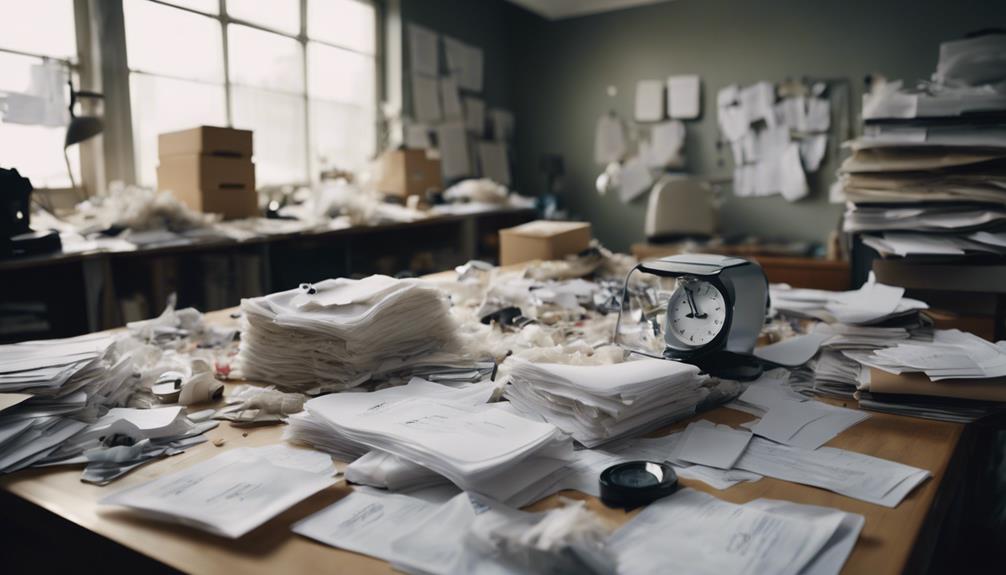
You might notice that without proper regulations, companies often escape accountability for their environmental impacts.
Government intervention is essential to enforce sustainable practices and guarantee that businesses prioritize genuine sustainability over mere marketing claims.
Accountability for Environmental Impact
The fashion industry's claims of sustainability fall short without strong regulatory intervention to hold companies accountable for their environmental impact.
Despite promises of eco-friendliness, the industry still contributes around 10% of global greenhouse gas emissions. Current market-based solutions lack the necessary accountability, allowing companies to continue harmful practices without facing consequences. This failure perpetuates a cycle of waste and pollution.
To effectively address these systemic issues, robust regulatory frameworks are essential. Voluntary measures have proven inadequate, as over 90% of emissions stem from processes like dyeing and fabric preparation, highlighting the urgent need for stricter regulations.
Without government intervention, companies are unlikely to internalize the costs associated with environmental degradation. This lack of accountability encourages the continued use of non-biodegradable, petroleum-based materials, further harming the planet.
Enforcement of Sustainable Practices
Without strong regulatory intervention, companies in the fashion industry can continue their harmful practices unchecked, highlighting the urgent need for enforced sustainable practices. The fashion sector contributes about 10% of global carbon emissions, yet many companies evade accountability, relying on voluntary environmental strategies that often fall short. You may notice brands touting bio-based materials and recycling efforts, but these innovations frequently fail to notably reduce their environmental footprint.
The lack of effective regulatory frameworks allows companies to operate with minimal oversight, perpetuating a cycle of environmental neglect. For real change, you need to advocate for stronger regulations that promote genuine environmental stewardship across supply chains. Only through enforced standards can the fashion industry be held accountable for its actions and pressured to adopt sustainable practices that truly minimize ecological harm.
As it stands, the misconception that sustainability exists on a spectrum allows companies to market 'less unsustainable' practices, which doesn't lead to true sustainability. Without intervention, the fashion industry risks remaining stagnant, continuing to harm the environment while claiming to be sustainable.
It's time for regulatory action to reshape the industry for the better.
Role of Government Regulations
Government regulations must step in to tackle the fashion industry's superficial sustainability claims and drive real change. You'll notice that many brands promote their eco-friendly initiatives, yet a closer look reveals a lack of true accountability for their environmental impacts. Without clear regulations, companies often prioritize profits over adopting genuine sustainable practices, leaving consumers misled.
Current voluntary measures, like ESG strategies, haven't greatly reduced environmental impacts. This illustrates the urgent need for stricter government regulations to enforce real accountability. By holding fashion companies accountable for their pollution and waste, regulations can push them to internalize these costs, making sustainability a priority rather than an afterthought.
Effective policies can incentivize brands to adopt genuine systemic changes that foster long-term sustainability. Instead of superficial improvements, these regulations can guarantee that companies engage in responsible practices that truly benefit the environment.
Limitations of New Business Models

New business models in sustainable fashion often struggle to make a meaningful impact on environmental issues due to systemic inefficiencies and a lack of consumer engagement. While practices like recycling and resale are gaining traction, they're not enough. Only 1% of textiles are currently reused, highlighting serious flaws in waste management.
Even with the secondhand market projected to hit $218 billion by 2026, many consumers still resist sustainable practices, which hinders real progress. Models promoting circular fashion frequently operate within the same linear economic framework that creates waste and pollution. They may overlook the need for systemic change, leading you to believe that any sustainable initiative is adequate. However, this isn't the case.
For these models to work, they must align with consumer behavior and drive significant shifts in how products are made and consumed. Ultimately, while new business models in sustainable fashion can offer solutions, they often lack the depth needed to address the root causes of environmental degradation. True sustainability requires a thorough approach that goes beyond temporary fixes and challenges the status quo.
Environmental Impact Misconceptions
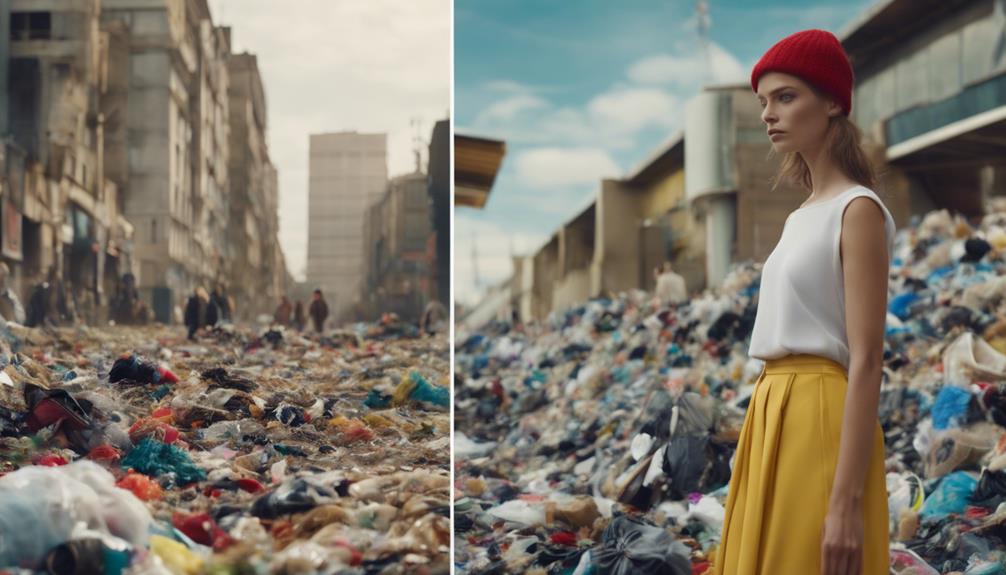
Challenging popular beliefs, many assume that sustainable fashion considerably reduces environmental harm, yet the reality is far more complex. While you might think that opting for eco-friendly clothing lowers the industry's environmental impact, the truth is that 87% of materials still end up in landfills or incinerators.
The fashion sector is responsible for about 10% of global carbon emissions, and predictions indicate that emissions from textile manufacturing could rise by 60% by 2030. Many products marketed as sustainable often rely on non-biodegradable materials, which perpetuates misconceptions about their ecological benefits.
Innovations like recycling and circular fashion initiatives sound promising, but only 1% of textiles are currently reused, revealing that these efforts haven't made a significant dent in textile waste. The belief that sustainable fashion can exist on a spectrum misrepresents reality; simply being 'less unsustainable' doesn't equate to true sustainability.
This underscores a vital point: without systemic change, the environmental impact of the fashion industry will likely remain unchanged, leaving you to reconsider what sustainable fashion really means.
High Costs of Sustainable Options

Despite the misconceptions about its environmental benefits, sustainable fashion often comes with high costs that can be a barrier for many consumers. If you're a budget-conscious consumer, you might find it challenging to invest in eco-friendly materials. The price of sustainable clothing can range from 2 to 5 times that of fast fashion, making ethical choices difficult.
Here's a quick overview of the factors contributing to these high costs:
| Factor | Impact on Price | Reason |
|---|---|---|
| Eco-Friendly Materials | Increases considerably | Quality materials are often pricier. |
| Ethical Labor Practices | Adds to production cost | Fair wages and safe conditions are prioritized. |
| Limited Production Runs | Drives prices up | Smaller batches mean less cost efficiency. |
| Time-Intensive Production | Higher labor costs | More care leads to greater expenses. |
| Demand vs. Supply | Higher prices | Limited availability raises consumer costs. |
These factors create a financial barrier not only for consumers but also for brands trying to maintain sustainable practices. While the benefits of sustainable fashion are undeniable, the initial investment can be intimidating.
Confusion in Consumer Choices

Many consumers feel overwhelmed by the confusing landscape of sustainable fashion, as unclear definitions and marketing tactics blur the lines between truly eco-friendly options and mere greenwashing. This confusion makes it tough for you to navigate your consumer choices effectively. With the fashion industry throwing around terms like 'sustainable' without clear standards, you might unknowingly support brands that don't genuinely prioritize the environmental impact of their products.
Many brands claim sustainability but lack transparency in their supply chains, leading you to question the authenticity of their efforts. You might think you're making a responsible choice, only to find out later that the product still contributes to environmental harm. Additionally, the idea that sustainable fashion exists on a spectrum can mislead you into believing that “less unsustainable” options are acceptable, which dilutes the urgency of adopting truly sustainable practices.
With such a small percentage of textiles being reused, it's clear that education is lacking. Without a solid understanding of materials and production processes, your ability to make informed decisions about sustainable fashion diminishes, leaving you in a state of confusion about what truly makes a difference.
Ethical Labor Practices Concerns

Steering through the world of sustainable fashion often reveals unsettling truths about ethical labor practices, raising concerns about the well-being of the workers behind your favorite garments.
While you might think that opting for sustainable brands guarantees fair treatment for workers, the reality can be quite different. Reports indicate that 80% of apparel production relies on young women facing low wages and poor working conditions, often due to the pressure from fast fashion's demand for cheap production.
Many sustainable brands source materials from factories with troubling labor practices, and cases of forced and child labor have been documented in the fashion supply chain. This suggests that sustainability claims don't always equate to ethical sourcing or labor conditions.
In addition, a significant number of these brands lack transparency in their supply chains, making it nearly impossible for you to verify how workers are treated.
Balancing cost-effectiveness with ethical labor practices often leads sustainable brands to compromise on worker rights. Maintaining fair wages and safe working conditions can increase production costs, leaving you questioning whether your efforts to support sustainability truly align with the ethical treatment of workers.
The Greenwashing Phenomenon
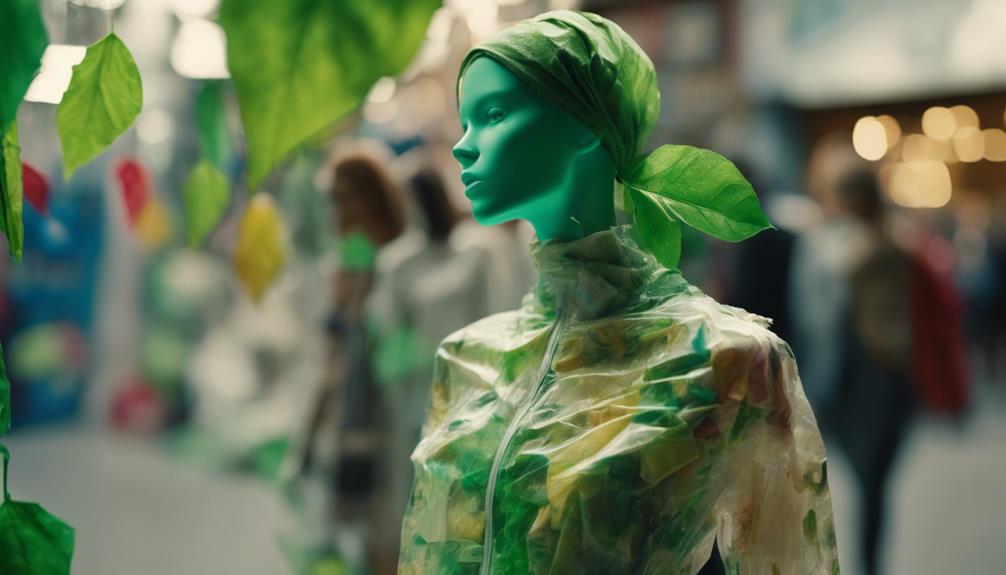
While concerns about ethical labor practices persist, another significant issue plaguing sustainable fashion is the prevalence of greenwashing, where brands mislead consumers by falsely marketing products as environmentally friendly. You might be surprised to learn that around 60% of fashion brands make sustainability claims that lack real substantiation. They often highlight minor eco-friendly initiatives while ignoring their overall environmental impact.
| Greenwashing Tactics | Consumer Impact |
|---|---|
| Misleading sustainability claims | Confusion about what's truly sustainable |
| Promoting carbon-positive products | Feeling misled by false marketing |
| Highlighting minor eco-initiatives | Overlooking substantial environmental damage |
This deception can lead you to believe that buying “green” products is enough to combat environmental issues, while brands continue using non-biodegradable, petroleum-based materials. With high-profile innovations often falling short, regulatory intervention is essential to combat greenwashing. Without it, companies will remain unaccountable for their misleading sustainability claims, further diluting the concept of true sustainability in fashion. As a consumer, staying informed about these practices can help you make better choices that align with genuine environmental values.
Frequently Asked Questions
What Is the Problem With Sustainable Fashion?
Sustainable fashion often struggles with effectiveness, as many initiatives fail to greatly reduce environmental impact. Plus, greenwashing misleads you, while high costs and confusing certifications make it hard to know what's genuinely sustainable.
What Are the Risks of Sustainable Fashion?
When you buy a sustainably marketed shirt, you might assume it's eco-friendly. However, many sustainable practices still contribute to pollution and resource depletion, leaving you unaware of the deeper environmental risks tied to your purchase.
What Are the Negatives of Ethical Fashion?
You might find ethical fashion expensive, making it hard to commit. Also, some brands don't maintain transparency, risking exploitation in production. Plus, you'll encounter misleading claims that could confuse your sustainable choices.
Why Most of Fashion Today Is Not Sustainable?
Most fashion today isn't sustainable because it relies heavily on non-biodegradable materials and fast production methods. You'll find that recycling and resale efforts often fall short, leaving a significant environmental impact unaddressed.
Conclusion
In the pursuit of sustainable fashion, it's crucial to recognize the shadows lurking behind its bright facade. Just like a beautiful flower can hide thorns, the industry's claims often mask significant challenges.
You might find that high costs, ethical concerns, and greenwashing complicate your choices. To truly embrace sustainability, you need to stay informed and critical, ensuring your efforts contribute to genuine change rather than just a trendy illusion.
Remember, real impact requires diligent awareness.




